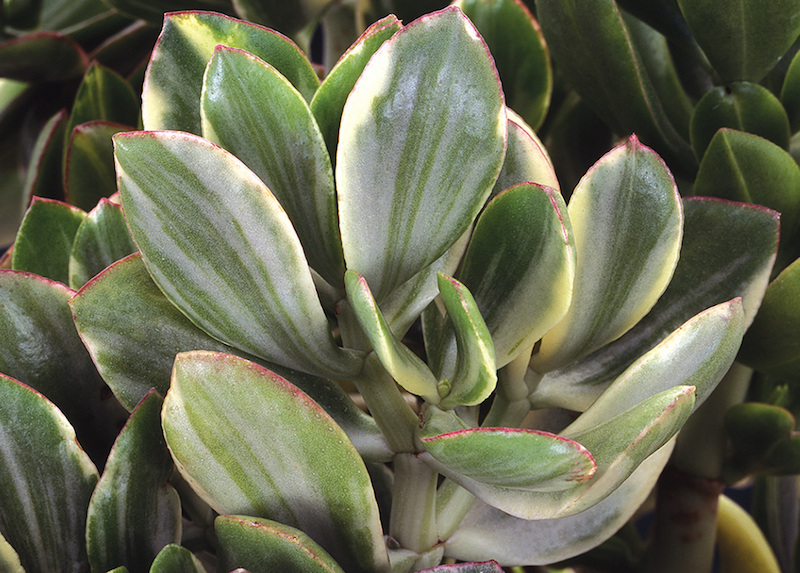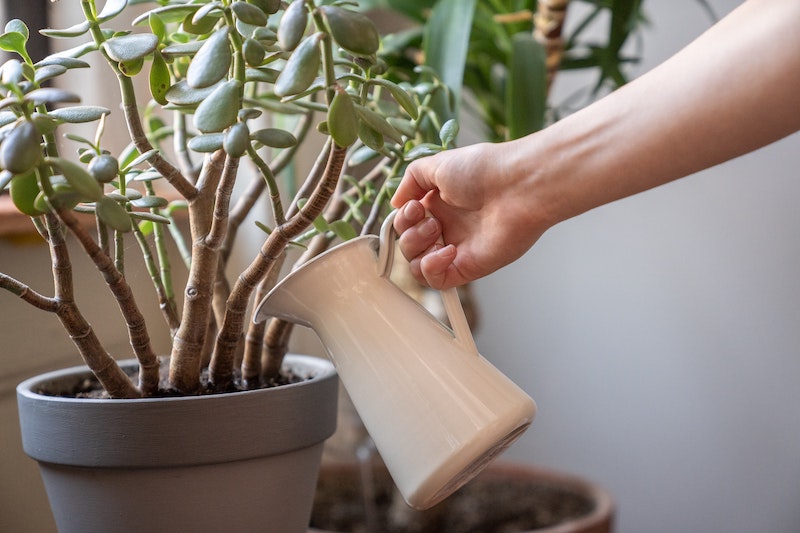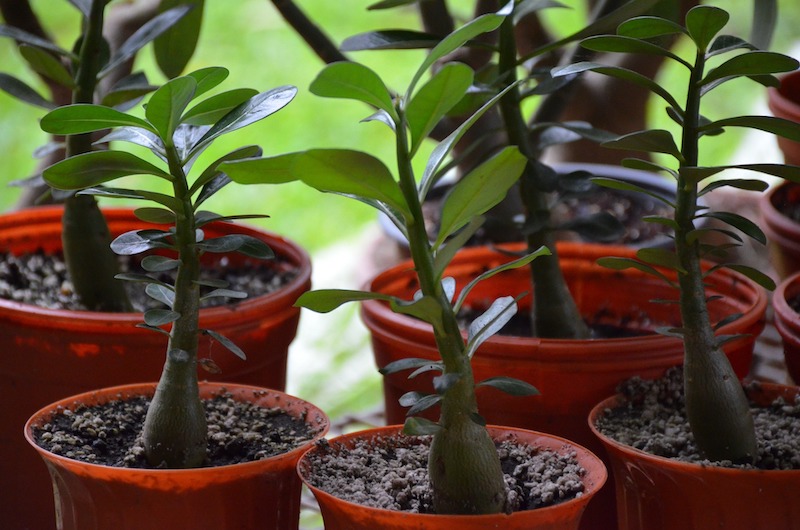Growing Jade Plant
Large, fleshy leaves in a deep green make Jade plants stand out. This plant is native to South Africa and is thought to bring good luck, making it a wonderful gift. Jade plants feature an upright, woody structure and thick, oval-shaped leaves. These resilient plants are succulents, so they store water in their glossy foliage. Taking care of Jade plants is easy, and these plants do well with a certain degree of neglect. With proper care, Jade plants can add a few inches of height per year and easily become large houseplants.

Jade Plant Sunlight Requirements
Place Jade plants in bright indirect sunlight. These easy-care plants like lots of light, so choose a sunny window with at least 6 hours of daylight. Direct light may burn the leaves, especially delicate, new foliage. Plants that fail to receive enough light may become leggy or straggly. Jade plants that receive enough light will have plenty of lush vegetation and a dense form.
Planting Jade Plant
Jade plants prefer well-drained soil that is neutral to acidic. Drainage is essential to growing Jade plants because these leafy plants like dry conditions. Repot every few years, and don’t be quick to repot because Jade plants like to be slightly root bound. Use a container that is one inch wider when repotting.
Watering Jade Plant
Water Jade plants more often when the plant is actively growing, usually in the spring and summer. Give your Jade plant a drink when the soil is dry throughout the container. Jade plants prefer bottom watering, where the pot is placed in a sink or container full of water for about 30 minutes. The soil will wick up water through the bottom drainage holes, hydrating the roots while keeping the foliage dry. Plants pushing out new foliage need more water, while plants not actively growing during dormancy prefer drier conditions. Dormant plants will need water only every one to two weeks.

Fertilizing Jade Plant
Feeding plants, like the Jade, encourages new growth and creates a full appearance. Fertilize Jade plants using a balanced fertilizer for succulents starting in the spring during active growth. Apply a slow-release, granular fertilizer once during the spring, or use a diluted, water-soluble fertilizer every few weeks. Plants often go dormant or stop growing during the fall and winter. Jade plants do not need to be fertilized when they are dormant.
Common Jade Plant Problems
Too much moisture is the most common problem for Jade plants. Overwatering will cause root rot and will kill the plant. Feel the soil to gauge the dampness, and water only when the plant needs it. When in doubt, it is better to wait a few days to water the Jade plant to avoid overwatering it.
Jade plants can fall victim to any type of pest, but mealy bugs are common. Treat an infested plant by wiping the foliage with a damp cloth to remove the insects. Avoid treating Jade plants with insecticides or horticultural oil that can damage the thick, fleshy leaves.
Propagating Jade Plant
Propagate Jade plants from cuttings. Choose a stem section that measures a few inches long and has a couple of leaves, or remove a single leaf. Let the cutting sit for a few days, so the cut end dries out and calluses over. Place the cut end of the stem section in moist soil or place the leaf on top of the soil and cover the cut end with soil. Roots will form in a few weeks, and the new plants can be grown in a starter container until it is time to upgrade to a larger pot. Wait to water the cutting until it sets roots.

Growing Jade Plant Outdoors
Jade plants can be grown outdoors but prefer mild, dry climates. A screened-in porch or protected area shielding the plant from rain and even heavy dew is best. Jade plants need a container with drainage so that excess water can drip through the soil, and the roots will not be left in standing water. Move Jade plants outside when the temperature is consistently above 50 degrees F, and get them back inside before the weather turns chilly.
 |
Author Alison Cotsonas - Published 03-07-2023 |
